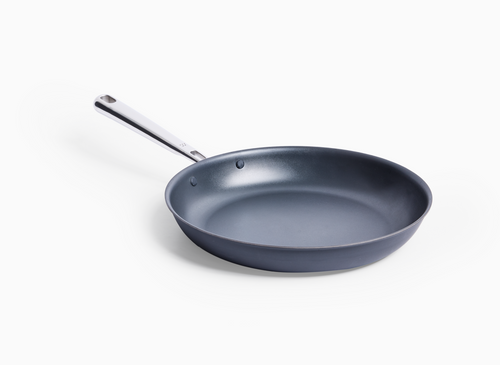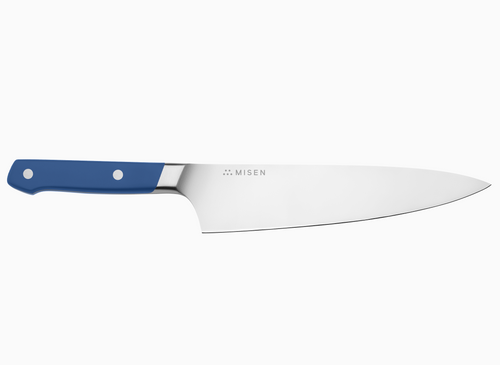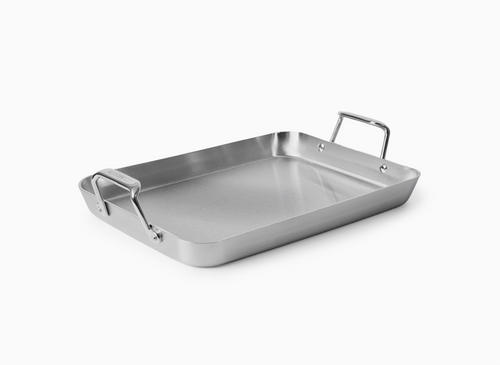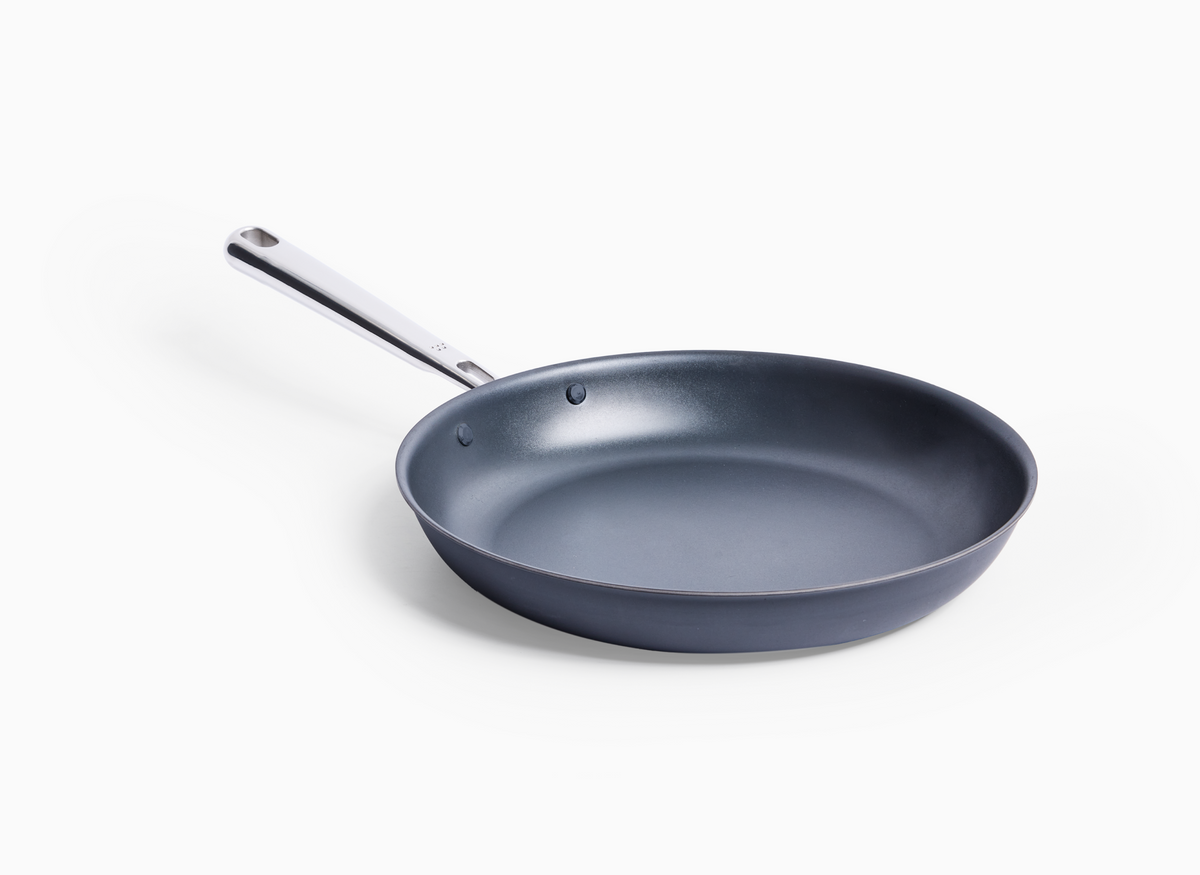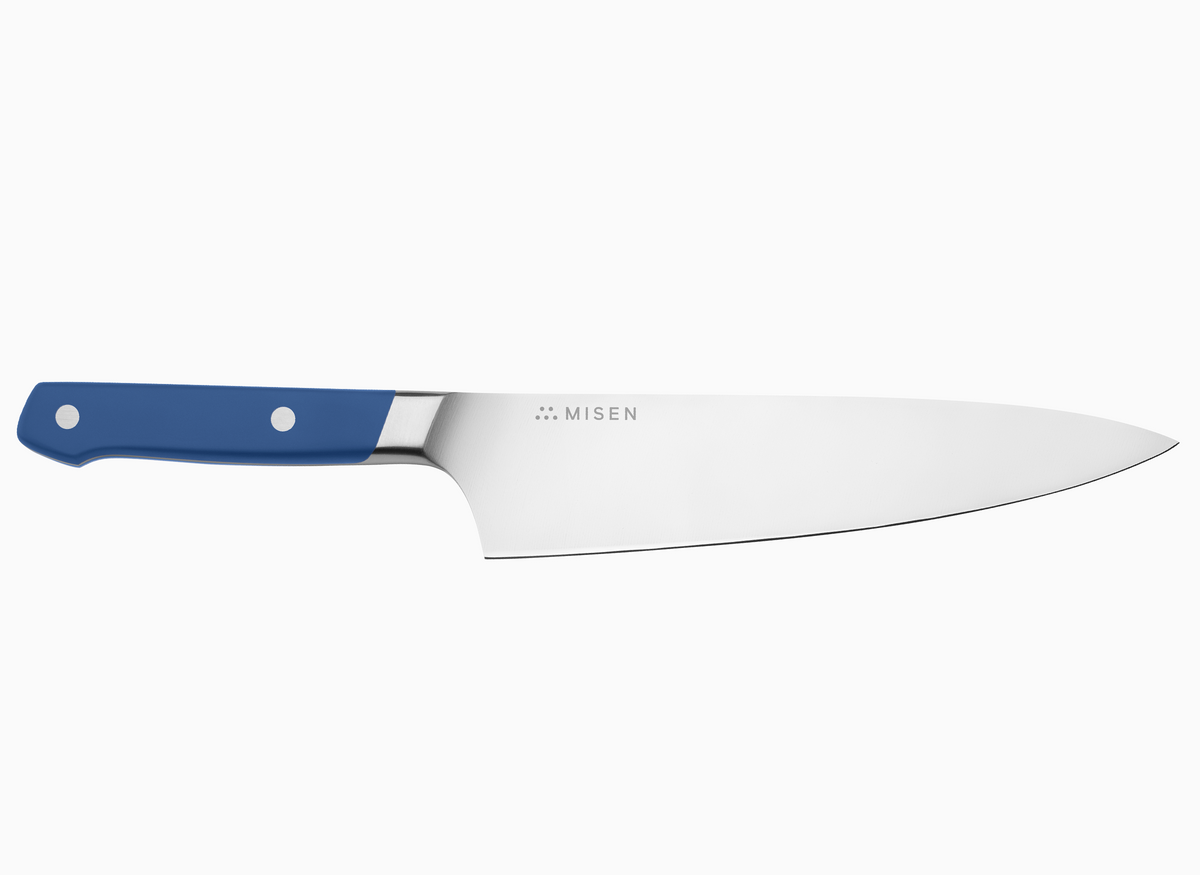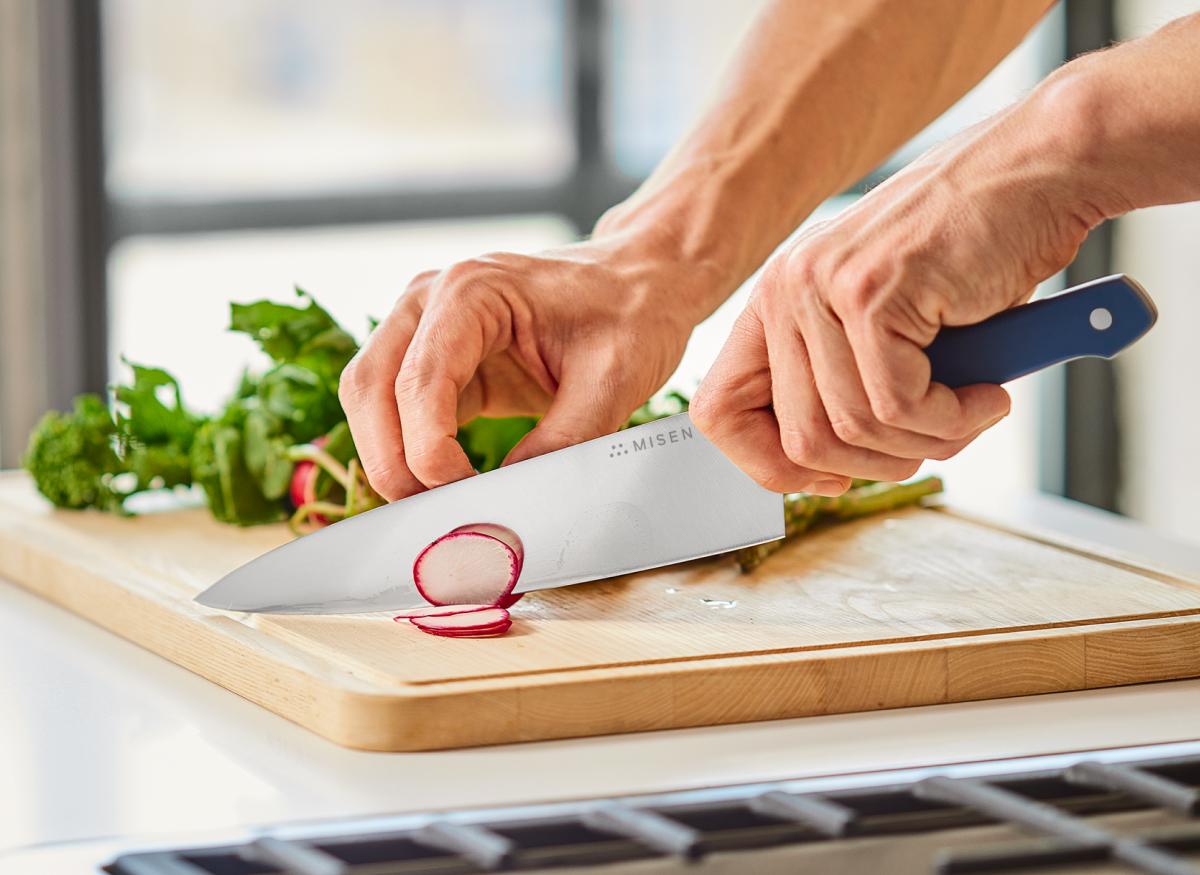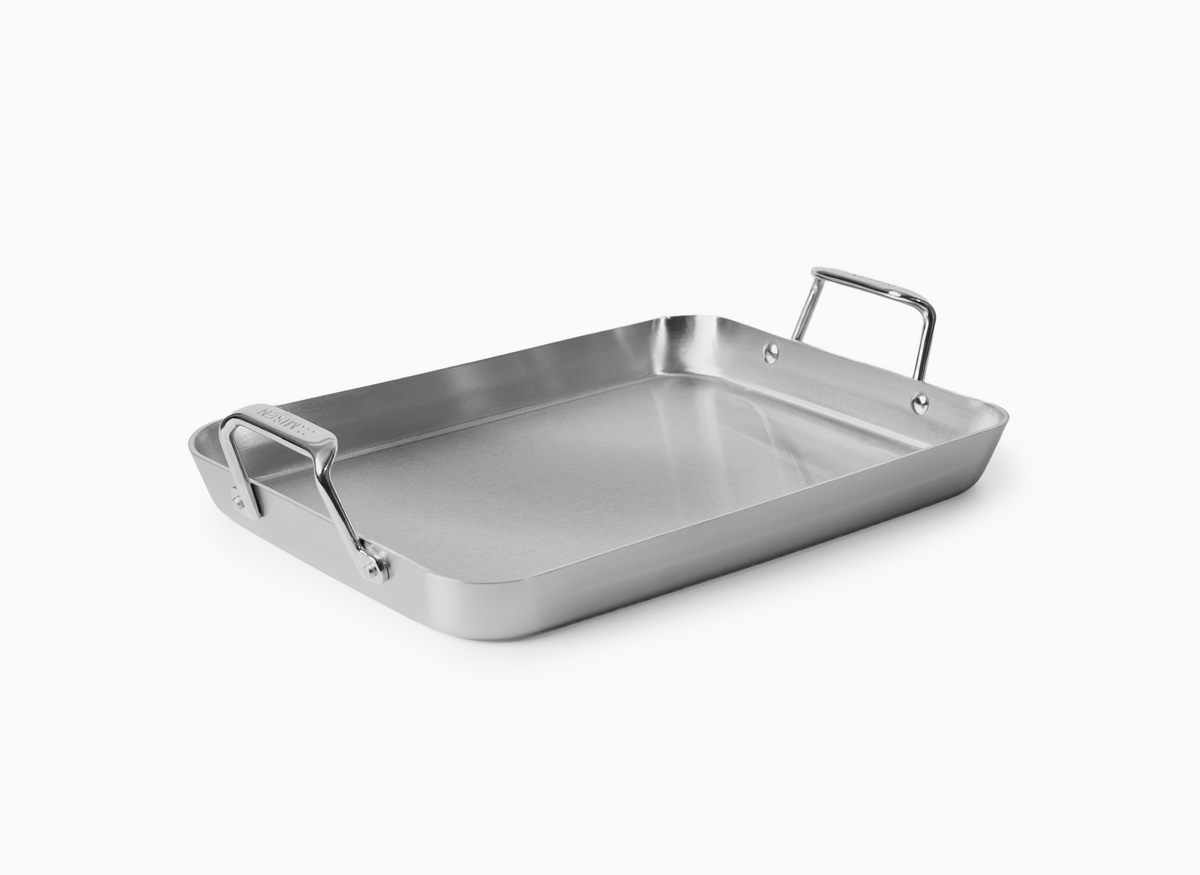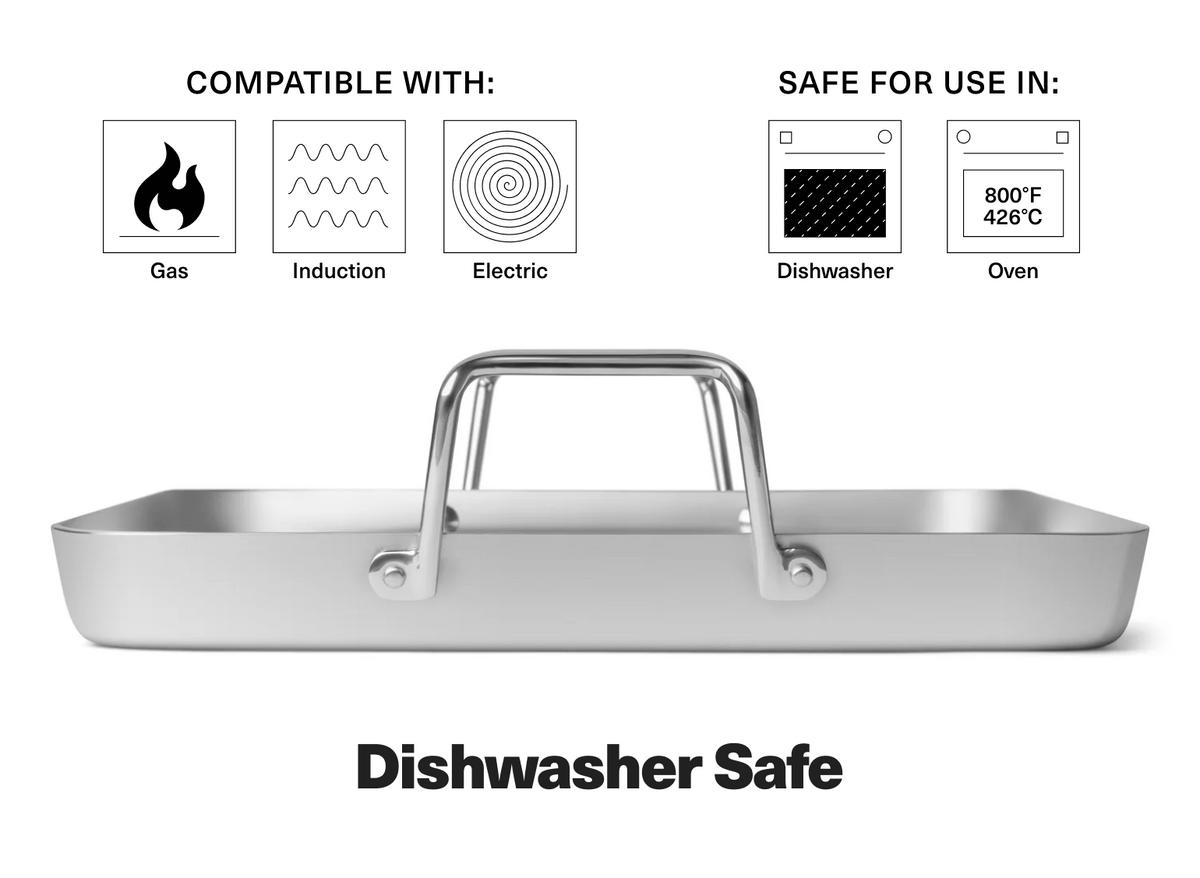Best Chef Spoons Under $20: Budget-Friendly Picks for Every Home Cook

For less than the cost of a delivery pizza, the right chef spoon can quietly revolutionize every meal you cook, and this guide proves you don’t have to spend more than twenty bucks to get a decade-long kitchen workhorse. Readers will learn how to spot the difference between dollar-store duds and true bargains—full-tang stainless that won’t bend in thick caramel, silicone tips that survive 450 °F without melting, and bacteria-killing hardwoods that outlast plastic by years—while pocketing the savings that come from escaping the yearly replacement cycle. The article breaks down exactly which materials, weights, and handle geometries protect non-stick pans, prevent scorched sauces, and keep hands fatigue-free through long simmers, then pairs that intel with a curated shortlist of 2025’s top-performing spoons under $20, complete with real-world durability notes and warranty fine print. Beyond the buy, it delivers pro-level care hacks—like food-grade mineral-oil schedules that keep wooden spoons crack-free for decades and storage tricks that stop silicone heads from warping—turning a simple utensil into a multi-tasking ladle, scraper, measurer, and tasting tool that pays for itself every time you cook.
Why Quality Matters for the Best Chef Spoons Under $20
A $20 chef spoon saves you $30 over a decade while outperforming flimsy replacements that bend, leach chemicals, and harbor bacteria in cracked crevices.
Hidden Costs of Cheap Spoons
Let's talk about why that $3 spoon might actually cost you more than a quality $20 option. Here's what happens: cheap spoons typically need replacing every 1-2 years, while well-made alternatives can serve you for a decade or more [1]. You'll feel the difference immediately – nylon tips soften when you're stirring that simmering sauce, and thin metal bends when you're mixing cookie dough [2].
Beyond performance issues, some budget plastics can leach chemicals at high cooking temperatures [3]. Cheap wooden spoons crack and splinter, creating spots where bacteria love to hide [3]. And think about this: every flimsy spoon you toss adds to landfill waste, when one quality tool could have done the job for years [1].
Your cooking deserves better than wrestling with a spoon that can't handle thick batters or high heat [2]. We'll explore specific material properties in detail later, but first, let's look at the real economics of buying quality.
Long‑Term Savings from Durable Design
Here's the math that might surprise you: one quality $20 chef spoon often costs less than buying cheap replacements over time. While the upfront investment seems higher, you're actually saving money by avoiding the replacement treadmill [4]. Think about it – replacing a $5 spoon every year for a decade adds up to $50, while that single $20 spoon keeps performing year after year [5].
But it's not just about the dollars. Quality construction means your spoon works better throughout its life. Look for full-tang stainless steel (where metal extends through the handle) or heat-resistant materials that won't fail when you need them most [6].
The best budget spoons resist the common failure points we see in cheaper options – handles stay firmly attached, surfaces resist staining, and the material maintains its shape through countless cooking sessions. This consistent performance makes every meal prep easier, turning that $20 into an investment in better cooking [5]. As we'll discuss in our care section, proper maintenance can extend this value even further.
Environmental Impact: Less Waste, More Lasting Tools
Your kitchen choices matter more than you might think. Every reusable spoon you choose over disposables cuts CO2 emissions dramatically – we're talking 597 grams per disposable use versus just 7 grams over a quality spoon's entire lifetime [7].
That adds up fast when you're cooking daily. Smart material choices multiply these benefits.
How a Solid Spoon Fits Everyday Cooking
Let's get practical about what a good chef spoon actually does in your daily cooking. This isn't just another utensil – it's your kitchen's MVP, reaching into hot pans, scraping up fond, tasting as you go, and plating your finished dishes. Morning oatmeal? Your spoon reaches those corners where breakfast likes to stick and burn [9].
Making sauce? The right tool turns potentially frustrating stirring into smooth, efficient work. Each material brings its own strengths to your cooking – wood stays cool and protects non-stick surfaces, stainless steel powers through thick mixtures without bending, and silicone handles heat up to 425°F while being gentle on your cookware [10]. But here's what many home cooks don't realize: professional chefs carefully choose specific spoons for different tasks because the right tool doesn't just make cooking easier – it makes it more successful [9].
A well-balanced spoon with an ergonomic handle keeps your hand comfortable through long cooking sessions, whether you're lifting vegetables from boiling water, folding delicate batters, or using it as an impromptu measuring tool [10]. We'll dive deeper into specific materials and features in the next section, but remember – investing in quality here pays off every single time you cook.
Key Features to Spot in Chef Spoons Under $20
For under $20, you can grab a silicone spoon that survives 482°F heat, a bacteria-trapping beechwood one, or an 18/10 stainless model—just check the handle-neck joint first, because that’s where cheap ones always break.
Material Strength and Heat Resistance
Choosing the right material makes all the difference in how your chef spoon performs. Silicone spoons handle temperatures up to 482°F without melting or releasing chemicals—perfect for high-heat cooking while protecting your non-stick cookware [12]. Their flexibility lets them reach every corner of your pots, scraping up every bit of sauce without scratching. Stainless steel brings serious strength to your kitchen. Quality 18/10 steel won't bend when you're stirring thick caramel or heavy dough, and it resists corrosion while giving you the control you need for precision tasks [12].
Watch out for budget options with thinner metal—they'll bend under pressure when you need them most. Wooden spoons, particularly those made from beech or olive hardwoods, naturally keep your hands cool while offering surprising strength for everyday cooking [12]. Here's something you might not know: wood's porous structure actually traps and kills bacteria within hours [12]. That's natural food safety built right in. For heat resistance, nylon spoons can handle up to 450°F when they're well-made, but cheaper versions start softening at lower temperatures.
The critical quality indicator? Check where the handle meets the spoon head—that's where budget options typically fail first. Some high-end silicone options withstand up to 600°F thanks to reinforced metal cores that prevent bending, though these features push prices higher. When shopping for [quality cooking utensils](https://misen. com/collections/cook-tools), focus on materials that match your cooking style and heat requirements.
Ergonomic Handle Design for Comfort
Ergonomic handle design directly impacts comfort during extended cooking sessions. A well-designed chef spoon under $20 features a handle with subtle curves that fit naturally in your palm, distributing pressure evenly to prevent hand fatigue [13]. Look for non-slip surfaces that maintain grip control when handling hot liquids or dense mixtures—silicone coatings excel here while adding minimal cost [13].
The connection point between handle and bowl deserves special attention, as this junction often creates pressure points with poorly designed spoons. Materials affect grip substantially, with wooden handles providing natural insulation for temperature control and silicone offering flexibility that reduces strain [13]. Some budget-friendly models include finger indentations that guide proper hand positioning, though these work best for average-sized hands [13].
For those who cook frequently, prioritize handles with balanced weight distribution to minimize wrist strain when lifting or stirring thick mixtures [13]. Even at affordable price points, smooth edge finishing prevents handles from digging into palms during repetitive motions—a feature that transforms a $15 utensil into something that feels premium during daily use [13].
Weight Balance and Spoon Geometry for Control
Weight balance affects cooking precision significantly, with well-distributed spoons providing better control during delicate tasks. Professional chef spoons typically feature strategic weight distribution between handle and bowl—even budget models under $20 can incorporate this design principle [14]. The geometry of the spoon head matters equally, with the ideal bowl depth of approximately 2.
5 inches providing enough capacity for sauce work without becoming unwieldy [15]. A slightly curved bowl edge allows for better scraping along pan corners while maintaining control. Well-designed budget spoons feature unibody construction—crafted from a single piece of metal without joints—which distributes weight more predictably across the utensil's length [15].
Handle thickness contributes directly to control; handles too thin strain fingers during extended use, while overly thick designs limit dexterity [14]. The Chef Kunz spoon design, available in budget versions, exemplifies effective geometry with its 9-inch length providing proper leverage for stirring thick mixtures while maintaining precision for delicate sauce work [14]. Look for spoons with a slight dip near the bowl-to-handle transition point, which creates a natural grip position that improves control while reducing hand fatigue [15].
Care Considerations: Dishwasher‑Safe vs Hand‑Wash
Different materials need different care approaches to keep them performing their best. Silicone spoons make life easy—they handle the dishwasher just fine and keep their non-stick properties [16]. Still, an occasional hand wash helps them last even longer. Wooden spoons need more attention.
Always hand wash them immediately with unscented soap and never put them in the dishwasher or let them soak. Why? The dishwasher's intense heat makes wood expand and contract rapidly, creating cracks where bacteria can hide [16] [17]. Stainless steel tolerates dishwashers, but hand washing with hot soapy water keeps that shine and prevents scratches over time [16].
Got a hybrid spoon with mixed materials? Always follow the care rules for the most delicate part. Know when to let go: wooden spoons with rough patches or deep cracks harbor bacteria, while silicone with tears or permanent discoloration could contaminate your food [16]. For complete care instructions including storage tips and maintenance schedules, see our detailed guide in "Caring for Your Budget Chef Spoon to Maximize Longevity" below.
Our Curated List of the Best Chef Spoons Under $20 (2025)
Grab a $20, 18/10 stainless or 450°F silicone chef spoon with a 9-inch handle and 2.5-Tbsp bowl and you’ll stir, flip, sauce and plate for years without scratching pans, bending tools, or cluttering your drawer.
Stainless‑Steel All‑Purpose Spoon
Stainless steel chef spoons deliver unmatched durability for everyday cooking. Quality options under $20 feature 18/10 stainless steel – the same grade that resists corrosion while handling thick batters without bending [20]. Look for 9-inch handles that keep your hands away from heat while reaching into deep pots [19].
The best designs feature larger bowls (holding about 2. 5 tablespoons) with slightly pointed tips for precise control during saucing and plating [18]. These versatile tools excel at multiple tasks: stirring dense caramel, flipping delicate foods, even creating restaurant-style presentations [18].
The non-porous surface prevents flavor transfer between dishes while resisting bacteria [20]. One well-made stainless spoon replaces several specialized tools – it tastes, bastes, and serves, clearing drawer clutter while improving your cooking [18]. With proper care, a single purchase outlasts years of replacements, proving more economical over time [20].
Silicone‑Tipped Spoon for Non‑Stick Cookware
Silicone-tipped spoons protect your non-stick cookware while handling high-heat cooking. These utensils withstand temperatures up to 450°F without melting or releasing chemicals [21]. The flexible material reaches into pot corners, scraping up every bit of sauce while preventing scratches on expensive pan finishes.
Quality versions combine soft silicone exteriors with reinforced nylon or steel cores – rigid enough for thick mixtures yet gentle on surfaces [21]. This dual construction stays stable during stirring while flexing to protect your pans. Look for BPA-free materials rated for your typical cooking temperatures [21].
Handle materials matter too – wood provides natural heat insulation while metal cores add durability [22]. Most silicone spoons handle dishwashers well, though hand washing extends their life, especially those with wooden handles [23]. Choose one-piece construction to avoid food traps, and consider ergonomic handles that reduce fatigue during long cooking sessions [23].
Classic Wooden Spoon Built to Last
Classic wooden spoons built from quality hardwood outlast cheaper alternatives by years. Teak leads the pack with natural oils that resist moisture and cracking through heavy use [24]. Unlike budget woods that stain and absorb odors, quality hardwood maintains its integrity.
Single-piece construction beats glued components that eventually separate [25]. The smooth surface naturally fights bacteria – wood actually traps and kills germs within hours [24]. Well-designed wooden spoons balance a thin scraping edge with enough bowl depth for scooping [26].
Hand wash immediately with warm water and mild soap, then dry thoroughly – never soak or dishwasher [24]. Monthly oiling with food-grade mineral oil prevents drying and cracking [25]. With basic care, a quality wooden spoon develops character while serving reliably for decades [26].
Hybrid Dual‑Material Spoon with Flexible Tip
Hybrid dual-material spoons merge different materials for maximum versatility. These smart designs typically pair silicone heads with wooden or metal handles – heat resistance where you need it, plus comfortable grip and durability. The flexible silicone tip conforms to pan edges, retrieving every bit of food while the rigid handle provides control [27].
This combination reaches every corner of your cookware without losing structural integrity. The flexible tip excels on non-stick surfaces, with some designs featuring grooved ends for better scraping [27]. High-heat versions withstand up to 600°F thanks to reinforced nylon cores that prevent bending in thick mixtures [27].
Natural wood handles insulate your hand from heat while the silicone head protects pan finishes [28]. Home cooks find these hybrids perfect for stirring sauces and scooping sticky foods without surface damage [27].
Caring for Your Budget Chef Spoon to Maximize Longevity
Protect your favorite spoons from becoming tomorrow's kindling by hand-washing wood immediately, skipping the dishwasher, and moisturizing handles with food-grade mineral oil—not the olive oil that turns rancid.
Gentle Cleaning Without Damaging Finishes
Your spoons work hard in the kitchen, so they deserve proper care. As we covered earlier in our care considerations section, different materials need different cleaning approaches. Here's what works best: For wooden spoons, hand wash immediately after use with unscented soap—those fragrant dish soaps might smell nice, but they leave residue that transfers to your food [29]. Skip the dishwasher completely. The intense heat warps and cracks wood, turning your favorite spoon into kindling [30]. And despite what TikTok says, don't boil wooden utensils—it's unnecessary and damaging [29].
Silicone and stainless steel spoons are more forgiving. Warm soapy water does the job, and silicone can usually handle the dishwasher. Just remember to dry everything immediately with a clean towel. Air-drying leads to water spots on metal and can warp wooden handles [30]. Got stubborn stains on wood? Mix equal parts vinegar and water—it removes mold safely without harsh chemicals [30].
For stainless steel, buff away water spots with a dry cloth to keep that professional shine. The golden rule? Clean spoons right after use. Food residue that sits becomes permanent stains, and nobody wants yesterday's curry flavor in today's oatmeal [31].
Maintaining Wooden Handles: Oiling and Seasoning
Wooden handles need regular oiling to stay strong and beautiful—think of it like moisturizer for your utensils [32]. Skip the olive or corn oil in your pantry though. These cooking oils go rancid and leave your spoons smelling funky [33]. Instead, grab food-grade mineral oil from the store. It protects without any smell or color, creating a barrier against moisture [33].
Want something more durable? Try linseed or walnut oil for a harder, varnish-like finish [33]. For the ultimate protection, mix up some spoon butter with beeswax and mineral oil—it's like waterproofing for wood [34]. Here's how to do it right: Pour a small puddle of oil on the handle and work it in with a lint-free cloth. Let it soak completely before using [33].
If your handles look really thirsty, give them the spa treatment—apply 3-5 coats over several days, waiting 24 hours between each [33]. There's an old woodworker's schedule that works perfectly: oil once, then again after four days, four weeks, four months, and then just once every four years [33]. Follow this routine and your wooden spoons will develop that gorgeous patina while staying strong enough to stir the thickest risotto.
Proper Storage to Prevent Warping and Rust
Storage matters more than you might think. Toss your spoons in a damp drawer and watch them warp, crack, or rust faster than you can say "where's my favorite stirring spoon? " For wooden spoons, moisture is enemy number one. Store them in vertical containers or drawer dividers where air can circulate freely—this prevents the dreaded mold that loves trapped moisture [35].
Make sure everything's bone dry before storage, especially stainless steel spoons. Water spots are annoying, but corrosion at weld points can actually ruin your tools [36]. Smart storage solutions include: - Drawer dividers that separate materials (metal scratches wood, wood can stain silicone) - Upright countertop holders—just ensure spoons are completely dry first - Wall-mounted hooks or racks for better airflow and easy access [35] Quick tip for wooden spoons: that oil treatment we mentioned earlier? It pulls double duty as storage prep, protecting against humidity swings that cause warping [37].
And those silicone-tipped spoons? Store them loosely. Cramming them into tight spaces deforms the flexible heads permanently—nobody wants a wonky spoon that can't scrape properly [37].
When to Retire a Budget Spoon Responsibly
Even the best budget spoons don't last forever. Knowing when to say goodbye keeps your cooking safe and your food delicious. Check wooden spoons every 2-3 years for these red flags: - Deep cracks or rough patches (bacteria love to hide here) - Dark mold spots that won't wash away - Any splinters—these can end up in your dinner [38][39] Stainless steel spoons need replacing when: - Handles wiggle or feel loose - Sharp edges develop from wear - Rust appears, especially at weld points [40] For silicone-tipped spoons, watch for tears, permanent discoloration, or loss of flexibility. These signs mean the material's breaking down and could contaminate your food [38].
When it's time to retire your faithful kitchen companion, be environmentally smart about it. Wooden spoons treated only with food-safe oils can join your compost pile. Metal belongs in recycling—check local guidelines. Some manufacturers even run trade-in programs, turning old utensils into garden mulch [39][40].
The sweet spot? Keep spoons long enough to get your money's worth, but not so long they become a health hazard. With proper care, even budget spoons can serve you well for years—making that under-$20 investment look pretty smart.
Everyday Cooking Hacks with Your Chef Spoon
Master your sauces with a 9-inch chef spoon: its long offset handle and generous bowl let you stir every corner without scorching, while doubling as an adjustable measuring tool that replaces a drawer full of gadgets.
Stir Sauces Evenly and Prevent Scorching
A quality chef spoon transforms sauce stirring from a basic task to precision cooking. The longer handle—typically around nine inches—keeps your hand safely away from heat while allowing complete control over stirring motions [19]. This design prevents the common scorching that occurs when sauces sit undisturbed against hot pan surfaces.
The generous bowl size distributes heat more effectively than smaller utensils, creating a flow that redistributes both heat and ingredients throughout your sauce [41]. This circulation is crucial for preventing hot spots where scorching begins. The slightly offset handle design of quality chef spoons creates the perfect angle for reaching pan corners—where sauces typically burn first—without awkward wrist positioning [19].
When stirring thick sauces like bechamel or tomato sauce, use slow, methodical motions that maintain consistent contact with the pan bottom, particularly important for preventing scorching in milk-based sauces. For delicate reductions, the weight balance of a proper chef spoon allows gentle surface stirring that speeds evaporation without breaking the emulsion [41]. These controlled movements ensure even cooking while preventing the burning that comes from inadequate stirring.
Combine Measuring and Scooping in One Motion
A quality chef spoon combines measuring and scooping functions, eliminating the need for separate utensils. Professional kitchens rely on color-coded portion spoons and spoodles with straight handles to ensure consistent serving sizes and minimize waste [42]. This standardized approach brings the same precision to your home cooking—use your chef spoon as a built-in measuring guide that simplifies recipe execution [42]. Adjustable measuring spoons take this concept further with sliding mechanisms that change the spoon's cavity size from ¼ teaspoon to 1 tablespoon [43].
These tools eliminate mid-recipe searching for specific measuring spoons—simply dial in the amount you need for spices, extracts, or oils [43]. The key: adjust the mechanism while the spoon is empty, then scoop your ingredient in one smooth motion to reduce kitchen clutter and streamline your workflow [43]. To perfect your measuring-scooping technique, hold the spoon like a pencil with your thumb on top and index finger along the handle [44]. This natural grip provides the control necessary for both precise measuring and smooth transfer of ingredients [44].
For thicker substances, use a gentle scooping-and-rolling motion that keeps ingredients secure within the spoon's curve while maintaining measurement accuracy [44]. With practice, you'll develop the confidence to measure by eye for everyday cooking, reaching for dedicated measuring spoons only when precise baking recipes demand it.
Taste, Adjust, and Finish Dishes on the Fly
Chef spoons serve as essential tools for tasting and adjusting seasoning throughout cooking. Professional chefs taste dishes multiple times during preparation—every good cook from Michelin-starred chefs to your Italian grandmother tastes their food at each stage [45]. Your chef spoon enables this crucial practice by allowing quick taste tests without interrupting workflow.
The long handle keeps your hands clean while reaching into hot pots and deep pans. The spoon's bowl shape delivers precise tastes, helping you catch subtle flavor imbalances that larger utensils would miss. For maximum efficiency, dedicate one chef spoon specifically for tasting—keep it within easy reach of your cooking area [45].
Some cooks maintain a small container of tasting spoons near the stove to encourage frequent sampling [45]. This practice transforms cooking from guesswork to precision, as you can immediately adjust salt, acid, or spice levels based on direct feedback rather than waiting until the dish is complete. Your budget chef spoon becomes invaluable during the final moments of cooking when quick adjustments can elevate a dish from good to exceptional.
Repurpose the Spoon as a Ladle, Press, or Scraper
Chef spoons transform into versatile kitchen tools that eliminate the need for multiple specialized utensils. The larger bowl works as a miniature ladle—perfect for serving soups, drizzling sauces, or portioning small servings without the bulk of traditional serving spoons [19]. Press the curved surface into soft foods to create professional swoops in hummus or avocado spread—no specialized tools needed [19].
The slightly offset design where the bowl meets the handle provides the perfect angle for scraping pots and pans, reaching corners that straight utensils miss [19]. Former Serious Eats editor Jacob Dean notes they're "perfect for basting a steak in a pan" while their long handle prevents splatter that commonly occurs with shorter utensils [19]. Beyond saucing, these multi-purpose tools excel at gently placing eggs in boiling water, scooping whipped cream onto desserts, and even serving food at gatherings—as one editor did for 40-plus wedding guests [19].
This versatility explains why the Kunz sauce spoon, developed in the 1990s, remains a kitchen standard, filling what editorial director Daniel Gritzer calls "a critical gap" between tiny teaspoons and unwieldy serving spoons [19].
Smart Buying Checklist for Budget‑Friendly Chef Spoons
Score a durable teak or olivewood chef spoon under $20 on Amazon by zeroing in on reviews that praise long-term moisture resistance and sturdy, heavier handles while watching for red-flag failures like cracks or warping where the handle meets the bowl.
Trusted Retailers and Online Platforms
Amazon provides a wide selection of budget-friendly kitchen tools, serving as a primary destination for chef spoons under $20. The platform offers everything from silicone-tipped utensils to stainless steel options with verified customer reviews that highlight durability and performance [46]. For wooden spoons specifically, retailers like Sur La Table offer quality options like their Olivewood Cook's Spoon, which was top-rated in expert testing despite being slightly above our $20 threshold [24].
More affordable alternatives include the FAAY Teak Cooking Spoon at $13, which received high marks for its moisture-resistant properties and smooth finish [24]. Specialty kitchen retailers including Williams Sonoma and Crate & Barrel provide well-crafted options, though often at premium price points - watch for sales to stay within budget [24]. When shopping online, examine product listings for specific materials and measurements; teak and olivewood spoons typically offer better moisture resistance and longevity compared to cheaper woods [24].
Food Network experts recommend checking customer reviews that mention specific performance factors like heat resistance and durability rather than focusing solely on aesthetics [46].
Reading Reviews for Durability Cues
When reading product reviews for chef spoons, focus on comments that mention specific performance aspects rather than just appearance. Look for reviewers who've owned the product for several months or longer—these provide insights into actual durability rather than just initial impressions [47]. Weight references often indicate quality; heavier spoons typically contain more material and resist bending during use [47].
Pay attention to specific failure points mentioned in negative reviews, particularly where handles meet the spoon head or reports of warping under heat [47]. For wooden spoons, seek out reviews mentioning resistance to cracking or moisture absorption, with teak and olivewood options typically performing better long-term [47]. Search for reviews using specific terms like "[product name] + durability" or "[brand] + lasted" to find relevant durability experiences [47].
Metal spoon reviews should mention whether the utensil has full-tang construction (where metal extends through the handle), which significantly improves longevity [47]. Reviews that discuss specific cooking tasks like stirring thick mixtures provide practical insights into structural integrity during actual use rather than theoretical durability [47].
Warranty, Return Policy, and What to Expect
Even budget chef spoons often include basic warranty coverage, though terms vary significantly by retailer. Most kitchen utensils under $20 come with standard 1-year guarantees covering manufacturing defects but excluding normal wear [48]. Premium brands sometimes extend this protection, with symbols like (#) indicating extended guarantees or (L) marking lifetime coverage [48].
When purchasing, check whether warranties cover just replacement or include shipping—many companies require proof of purchase for claims, making receipt storage essential [48]. Return windows typically range from 14-30 days, with some retailers covering return shipping costs during this period while charging customers for later returns [48]. For online purchases, examine policies carefully as some budget items are marked "final sale" with no return options [48].
The longevity claims on packaging often exceed actual warranty periods—while some companies advertise "multi-century" durability [49], their legal obligations typically remain limited to 1-3 years. When comparing similar products, those with more comprehensive guarantees often indicate manufacturer confidence in their materials and construction [49]. Budget-conscious shoppers should prioritize retailers offering hassle-free exchanges without requiring original packaging, particularly important for kitchen tools that might show defects only after several uses.
Timing Purchases: Sales, Discounts, and Bulk Options
Strategic timing significantly impacts the cost of quality chef spoons. Major kitchen sales align with retail calendar events—Black Friday, Cyber Monday, and end-of-season clearances typically offer the deepest discounts on individual utensils and sets [50]. Amazon regularly discounts cooking tools, with many quality options bundled in value-priced collections from 5 to 33 pieces [50].
When evaluating bulk purchases, consider your actual cooking needs rather than just the piece count—a thoughtfully selected 5-piece set often provides more utility than larger collections with redundant tools [51]. Many premium utensil manufacturers offer seasonal price reductions that bring quality items under our $20 threshold, with pricing patterns showing significant discounts in January post-holiday and again during summer wedding season [51]. For highest-value purchases, look for coordinated bundles that combine different materials and functions rather than sets containing variations of the same tool [51].
Food & Wine testing revealed price inconsistency across the market, with sets ranging from $70 to $215 despite comparable quality, suggesting patience and strategic timing can yield substantial savings [51]. When purchasing multipacks, examine whether each tool addresses a distinct kitchen task—effective sets include various shapes and functions rather than size variations of the same basic design [51].
A $20 chef spoon can outlast 10 years of $5 replacements, saving money long-term
- A $20 chef spoon can outlast 10 years of $5 replacements, saving money long-term
- Full-tang 18/10 stainless or 482°F silicone spoons under $20 resist bending and melting
- Wooden spoons naturally kill bacteria within hours but must be hand-washed and oiled monthly
- Hybrid silicone-head/wood-handle spoons combine 600°F heat resistance with comfortable grip
- Nine-inch handles and 2.5-inch bowls give safe, precise control for sauces and scraping
- Clean immediately after use: silicone can dishwasher, wood never soaks, steel hand-dry to prevent spots
- Retire spoons when wood cracks, silicone tears, or steel handles loosen to avoid food contamination
- https://www.bcknife.com/blogs/news/the-hidden-costs-of-cheap-knife-sets-vs-investing/
- https://www.listful.com/guides/article/the-most-worth-it-utensil-sets-for-every-budget-2025
- https://jingsourcing.com/p/b23-kitchen-utensils-materials/
- https://gradesfixer.com/free-essay-examples/the-importance-of-kitchen-utensils-a-comprehensive-analysis/
- https://www.quora.com/What-are-the-pros-and-cons-of-buying-expensive-kitchen-utensils
- https://gourmetkitchenworks.com/blogs/recipes/5-kitchen-tools-that-will-save-you-money-in-the-long-run
- https://greenworkscutlery.com/blog-news-13047/choosing-reusable-spoons-a-guide-for-eco-friendly-cooks-11947162.html
- https://www.anchenggy.com/blog/sustainable-kitchenware-eco-friendly-choices-for-conscious-cooks.html
- https://www.souschef.co.uk/blogs/the-bureau-of-taste/what-is-a-kitchen-spoon-used-for
- https://www.seriouseats.com/best-kitchen-utensil-set-6753446
- https://www.thespruceeats.com/best-cooking-utensils-to-buy-4110334
- https://misen.com/blogs/news/types-of-chef-spoons-find-the-right-style-for-your-cooking-needs?srsltid=AfmBOorKHXEcOjl530MNdVB-VlIL3QwT-kyckKN4bXEL2JVzwqy1y6rk
- https://kimarkcreations.com/?p=1335
- https://www.amazon.com/chef-spoons/s?k=chef+spoons
- https://www.techefusa.com/product-page/chefcore-stainless-steel-cooking-spoon?srsltid=AfmBOopUh1PbVz0CIprru17I61tUAyKMVCtFxrZyX1BKwfJWWD5GdMW-
- https://misen.com/blogs/news/types-of-chef-spoons-find-the-right-style-for-your-cooking-needs?srsltid=AfmBOop6IMUx7rNu_JYR9UBkViqUXjhXbDFo42GR0jRTdY7hBgXJ-F3a
- https://www.seriouseats.com/best-wooden-spoon
- https://www.epicurious.com/expert-advice/the-5-kitchen-spoons-you-absolutely-need-article
- https://www.seriouseats.com/sauce-spoon-review-7500742
- https://misen.com/blogs/news/types-of-chef-spoons-find-the-right-style-for-your-cooking-needs?srsltid=AfmBOooWQICHTuhgFaCaS-G_XBMZo6DevJ_b4EtrPCv1gBvX8cJ3PhY_
- https://www.tasteofhome.com/collection/non-stick-cooking-utensils/
- https://www.amazon.com/cooking-spoons-nonstick-cookware/s?k=cooking+spoons+for+nonstick+cookware
- https://www.thespruceeats.com/best-spatulas-5097344
- https://www.foodandwine.com/best-wooden-spoons-7104848
- https://www.amazon.com/Wooden-Spoons-Cooking-Teak-Utensil/dp/B0BBGQ2GLZ
- https://www.americastestkitchen.com/equipment_reviews/2191-wooden-spoons
- https://www.wayfair.com/kitchen-tabletop/sb2/heat-resistant-spoons-cooking-utensils-c1840071-a5098~14314-a151216~497118.html
- https://www.foodandwine.com/favorite-under-20-non-toxic-utensils-2024-8759973
- https://www.nytimes.com/wirecutter/reviews/how-to-clean-wooden-spoon/
- https://thespooncrank.com/how-to-clean-and-care-for-your-wooden-spoons-and-utensils/
- https://www.pacificmerchants.com/blog/the-wooden-cooking-spoon-and-why-you-should-care/?srsltid=AfmBOopyLAJC1QE2PRWiqs5eabbbHn3YFoA8zhiGci-XlEQcFROBFE7q
- https://www.thekitchn.com/best-wood-oils-and-conditioners-23105296
- https://food52.com/story/16189-the-best-oils-techniques-for-finishing-wooden-kitchen-tools
- https://www.americastestkitchen.com/articles/7462-how-to-make-your-wooden-kitchen-tools-last
- https://www.eishoo.com/news-how-do-you-store-utensils-not-in-use.html
- https://www.quora.com/How-can-I-clean-and-disinfect-wooden-kitchen-utensils-like-spatulas-and-mixing-spoons
- https://letsgogreen.com/blog/non-toxic-cooking-utensils/
- https://blog.pamperedchef.com/kitchen-tips-tools/signs-its-time-to-replace-kitchen-items/
- https://tuuli-shop.com/blogs/news/how-often-should-you-replace-wooden-kitchen-utensils-expert-tips-for-lasting-wellness-and-sustainability?srsltid=AfmBOormAu_cWRNn_yAd0L8W1Sr-HVaxOA6rqOwWCOei9E8r54dBgIi1
- https://www.foodandwine.com/stainless-steel-wooden-kitchen-utensils-amazon-11804472
- https://palmnakiplates.com/blogs/news/the-art-of-stirring-techniques-every-home-cook-should-know?srsltid=AfmBOorPoyxO2u_jXfwV-c6_aAxGfPbtu1I03_KEQbsQIjydEOZoQ9mT
- https://misen.com/blogs/news/serving-with-a-chef-spoon-presentation-and-portion-control?srsltid=AfmBOor07c-1mFI0HtjDRZuabZzc2TVkh3x_Yx2XSYXWAT9P6pFi-ehU
- https://www.dioro.com/blogs/news/adjustable-measuring-spoon?srsltid=AfmBOoqnzh0AwevVnqVMealL16Me9u8hu3M2o97b9KuGkdmYocZiodka
- https://smart.dhgate.com/mastering-spoon-techniques-practical-tips-for-everyday-use-and-dining-etiquette/
- http://www.missionkitchensf.com/kitchen-tip-tasting-spoons/
- https://www.foodnetwork.com/how-to/packages/shopping/most-useful-amazon-kitchen-products
- https://www.quora.com/How-do-I-know-if-cookware-pots-pans-cooking-utensils-are-good-if-I-dont-recognize-the-brand-What-are-some-indicators-I-should-look-for-in-a-good-set
- https://www.pamperedchef.com/return-policy.html
- https://www.solidteknics.com/?srsltid=AfmBOoqwH9dk-cP_17X_jxmsDBbnendC8yWJlhnA2zIRHB8DV6Cs2leu
- https://www.foodandwine.com/lifestyle/kitchen/best-utensil-sets
